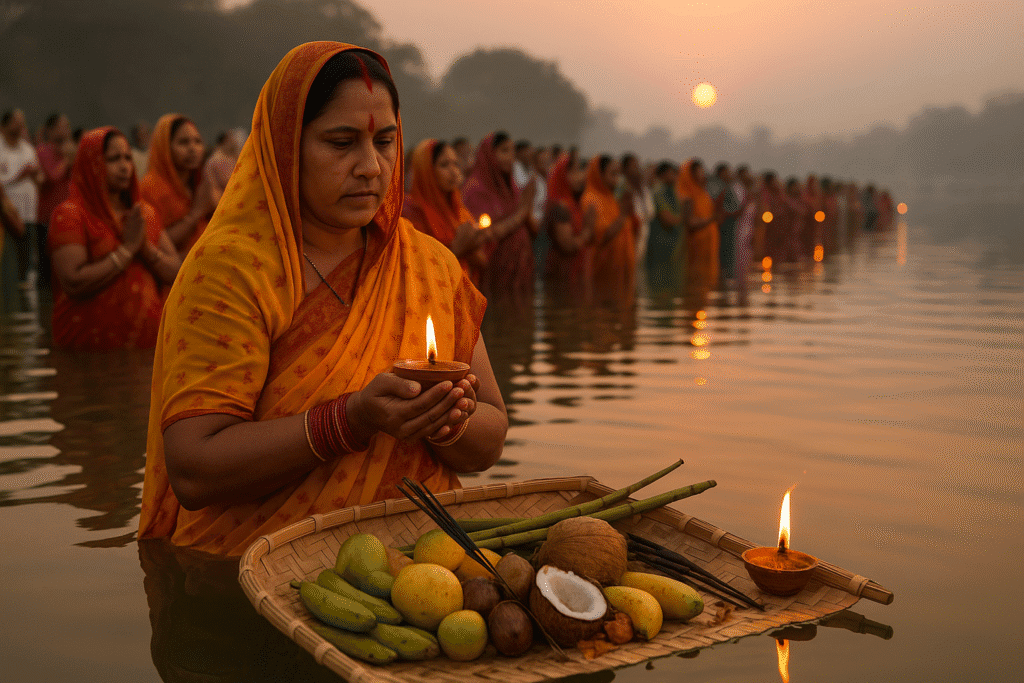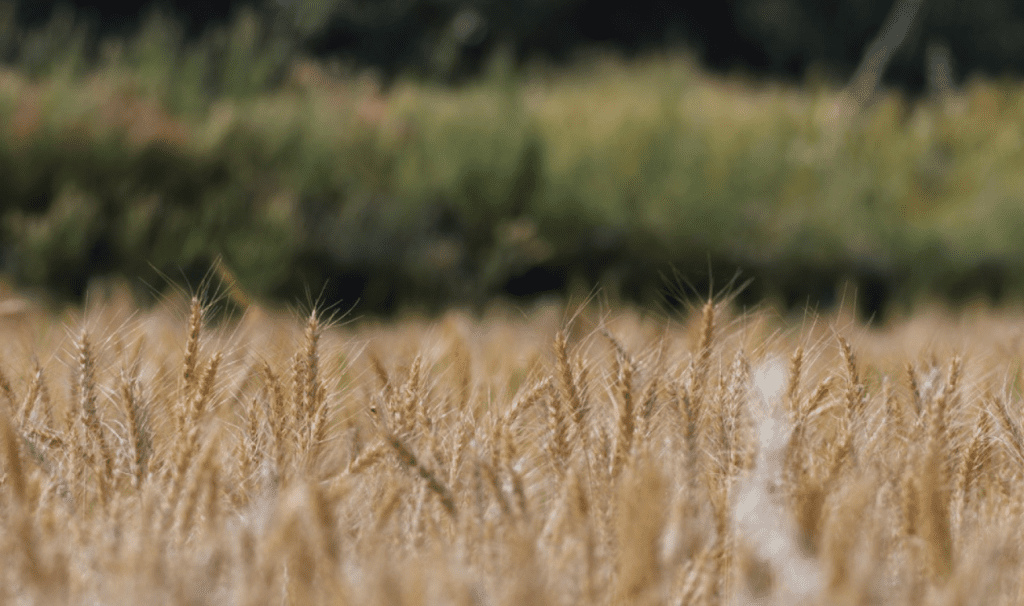Introduction: A Festival of Reverence and Gratitude
Chhath Puja, an ancient Hindu festival, is a profound expression of devotion to Surya, the Sun God, and Chhathi Maiya, the goddess of life and prosperity. Celebrated predominantly in Bihar, Jharkhand, Uttar Pradesh, and among the diaspora, this four-day festival, held in the Hindu month of Kartik (October–November), is a vibrant tapestry of rituals, fasting, and communal harmony. Known for its rigorous practices and eco-conscious traditions, Chhath Puja transcends caste and class, uniting millions in gratitude for life, health, and nature’s bounty. This article explores the historical roots, rituals, cultural significance, and modern evolution of Chhath Puja, illuminating its timeless appeal.
Historical and Spiritual Roots
Ancient Origins in Vedic Traditions
Chhath Puja traces its origins to Vedic times, with references in texts like the Rigveda, which venerates Surya as the source of life. The festival’s rituals echo ancient sun-worshipping practices, blending Vedic and folk traditions. Legends link Chhath to the Mahabharata, where Draupadi and the Pandavas performed similar rituals to overcome hardships, and to Lord Rama, who offered arghya (water offerings) to Surya upon returning to Ayodhya. The worship of Chhathi Maiya, believed to be a manifestation of Goddess Usha (dawn), adds a unique folk dimension, tying the festival to fertility and family well-being.
The Role of Chhathi Maiya
Chhathi Maiya, revered as the protector of children and granter of prosperity, is central to the festival. Devotees, particularly women, undertake Chhath for the health and longevity of their families, believing the goddess fulfills heartfelt vows. The festival’s dual focus on Surya’s cosmic energy and Chhathi Maiya’s nurturing spirit reflects a harmonious blend of nature worship and familial devotion, making it a cornerstone of eastern India’s cultural identity.
The Four Days of Chhath Puja: A Journey of Purification
Day 1: Nahay Khay – The Ritual Bath
Chhath Puja begins with Nahay Khay, a day of cleansing. Devotees, known as vratin or parvaitin, take a holy dip in rivers, ponds, or ghats, preferably in the Ganges or Kosi. Homes are scrubbed clean, and a simple, sattvic meal of rice, chana dal, and pumpkin curry cooked on a clay stove with mango wood is shared. This day sets the tone for spiritual purification, aligning body and mind for the rigorous days ahead.
Day 2: Kharna – The Evening of Fasting
On Kharna, devotees observe a nirjala (waterless) fast until sunset. In the evening, they prepare kheer (rice pudding) and roti as prasad, cooked with jaggery and offered to Chhathi Maiya. The prasad is shared with family and neighbors, symbolizing community bonding. After breaking the fast, devotees resume fasting, preparing for the most demanding rituals. Kharna emphasizes discipline and the sharing of blessings, reinforcing social ties.
Day 3: Sandhya Arghya – Offering to the Setting Sun
The third day, Chhath or Pehla Arghya, is the festival’s pinnacle. Devotees fast without water for 24 hours, preparing elaborate offerings in soops (bamboo baskets). These include thekua (wheat flour cookies), seasonal fruits, sugarcane, and coconuts, arranged with diyas (oil lamps). At sunset, vratin wade into water bodies to offer arghya to the setting sun, accompanied by folk songs and prayers. The serene sight of thousands standing in water, hands raised with glowing diyas, is a testament to the festival’s spiritual depth and visual grandeur.
Day 4: Usha Arghya – Welcoming the Rising Sun
The final day, Paran or Doosra Arghya, concludes with offerings to the rising sun at dawn. Devotees repeat the arghya ritual, praying for prosperity and health. After the offerings, they break their fast with prasad and salt, ending the 36-hour nirjala fast. The breaking of the fast, called Paran, is a moment of joy, with families gathering to share thekua and fruits. This day symbolizes renewal, as devotees return home with strengthened faith and communal bonds.
Cultural Significance: A Festival of Unity and Sustainability
Bridging Communities and Castes
Chhath Puja is a rare festival that transcends social barriers. Open to all castes and communities, it sees participation from Hindus, Muslims, and others, particularly in Bihar and Jharkhand. The shared spaces of ghats and the collective singing of folk songs like “Uga Ho Suruj Dev” foster unity. The festival’s accessibility, requiring no priests or temples, empowers women, who lead the rituals, reinforcing their spiritual agency in a patriarchal society.
An Eco-Conscious Tradition
Chhath Puja stands out for its environmental ethos. Rituals emphasize natural materials—bamboo soops, clay diyas, and biodegradable offerings—reflecting a deep respect for nature. The use of clean water bodies and the avoidance of idols align with sustainable practices, making Chhath a model of eco-friendly worship. Community efforts to clean ghats, as seen in Patna’s 2024 celebrations, further highlight this commitment, ensuring the festival remains in harmony with the environment.
Culinary Traditions: Simplicity and Symbolism
The cuisine of Chhath Puja is rooted in purity and simplicity. Thekua, a deep-fried cookie made from wheat flour, jaggery, and ghee, is the festival’s signature offering, symbolizing abundance. Other offerings include seasonal fruits, coconuts, and sugarcane, reflecting the harvest’s bounty. The sattvic meals of Nahay Khay and Kharna, cooked without onion or garlic, emphasize spiritual cleansing. These dishes, shared widely, strengthen community ties, with neighbors exchanging prasad as a gesture of goodwill.
Music and Folklore: The Soul of Chhath
Chhath Puja is inseparable from its soulful folk songs, sung in Bhojpuri, Maithili, and Magahi. Songs like “Kelwa Ke Paat Par” and “Chhathi Maiya Aayi Na” narrate tales of Chhathi Maiya and the sun’s glory, passed down through generations. These melodies, often accompanied by harmonium and dholak, fill the air at ghats, creating an ethereal atmosphere. The oral tradition of storytelling, including tales of Draupadi’s devotion, adds depth, connecting devotees to their cultural roots.
Modern Evolution: A Global Festival
Chhath Beyond Bihar
Once confined to eastern India, Chhath Puja has become a global celebration, thanks to the Bihari and Purvanchali diaspora. In 2024, vibrant celebrations were reported in Mumbai, Delhi, Bengaluru, and international cities like London, New York, and Sydney. Urban devotees create artificial ghats or use pools, adapting rituals to new settings while preserving their essence. Social media platforms amplify the festival’s reach, with live-streamed arghya and viral thekua recipes connecting communities worldwide.
Government Support and Challenges
In India, Chhath Puja is a public holiday in Bihar, Jharkhand, and parts of Uttar Pradesh, with governments ensuring clean ghats and safety measures. Patna’s 2024 preparations included 100+ ghats and drone surveillance for crowd management. However, challenges like water pollution and overcrowding persist, prompting community-led clean-up drives and calls for sustainable practices. The festival’s resilience, seen during the 2020 pandemic with scaled-down celebrations, underscores its adaptability and enduring appeal.
Chhath Puja in Context
A Unique Sun-Worshipping Festival
Chhath Puja shares parallels with other sun-worshipping festivals like Makar Sankranti and Pongal but stands out for its rigorous fasting and direct offerings to the sun without idols. Its focus on both sunrise and sunset arghya, combined with Chhathi Maiya’s worship, distinguishes it from purely Vedic traditions. The festival’s folk-driven, women-led rituals add a populist charm, setting it apart in India’s diverse festival landscape.
A Celebration of Women’s Strength
Chhath Puja is a powerful showcase of women’s resilience. The 36-hour nirjala fast, often undertaken by mothers for their children’s well-being, reflects unparalleled devotion. Women’s leadership in preparing offerings and leading ghats’ rituals challenges gender norms, making Chhath a feminist spiritual practice rooted in tradition.
Conclusion: A Beacon of Faith and Unity
Chhath Puja is more than a festival; it is a celebration of life, nature, and unbreakable faith. From the serene waters of the Ganges to urban ghats worldwide, its rituals weave a story of gratitude, discipline, and communal harmony. The glow of diyas, the rhythm of folk songs, and the taste of thekua evoke a timeless connection to the sun, the earth, and the divine. As devotees offer arghya to Surya and Chhathi Maiya, they reaffirm their bond with nature and each other, carrying forward a legacy of devotion. In its simplicity and splendor, Chhath Puja shines as a beacon of hope, uniting hearts in reverence for the forces that sustain us all.



